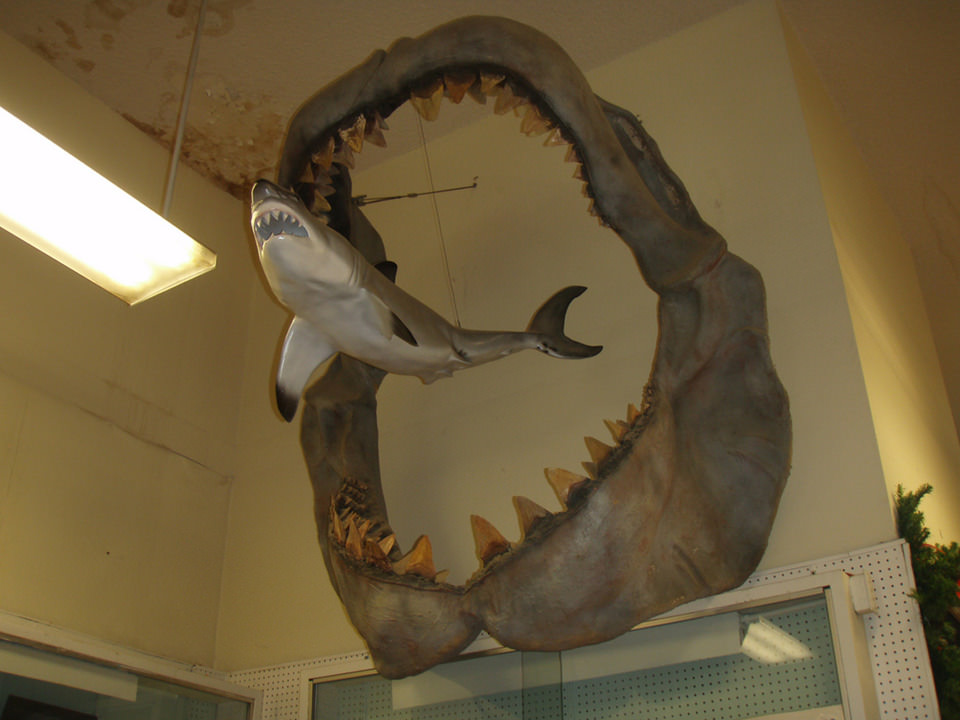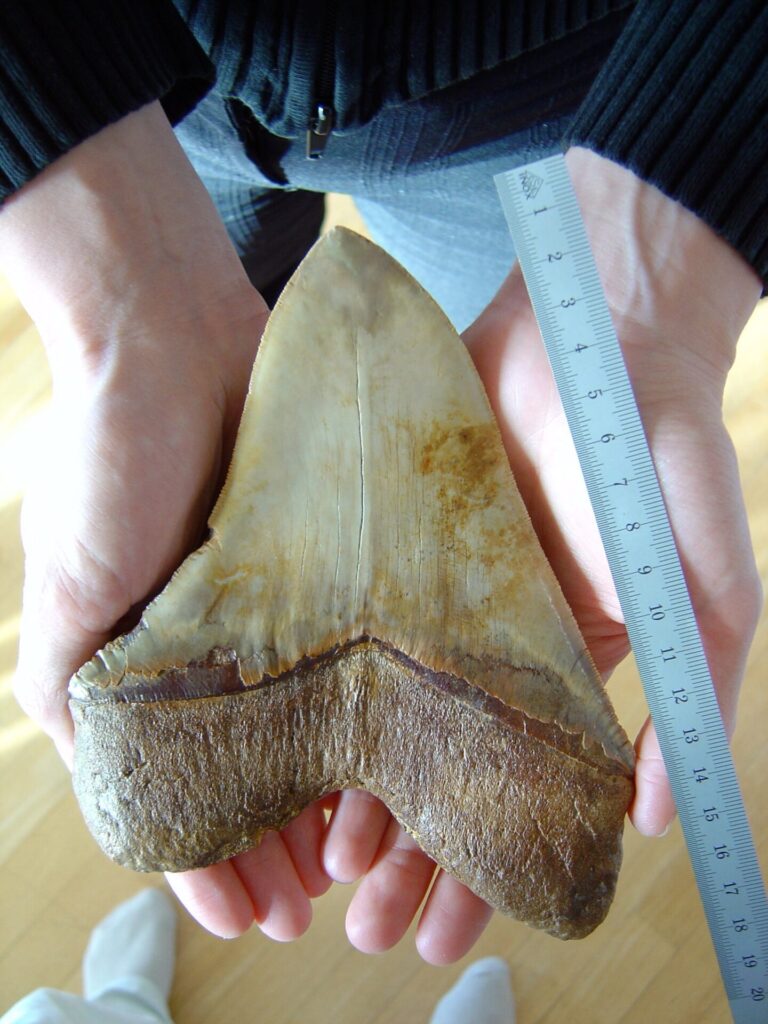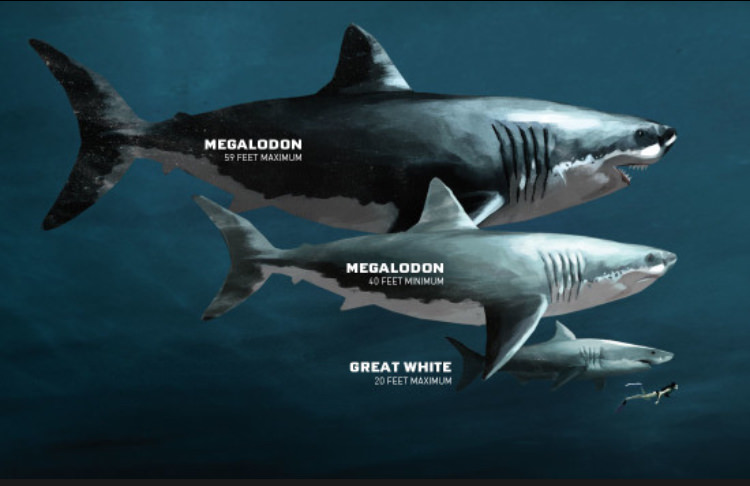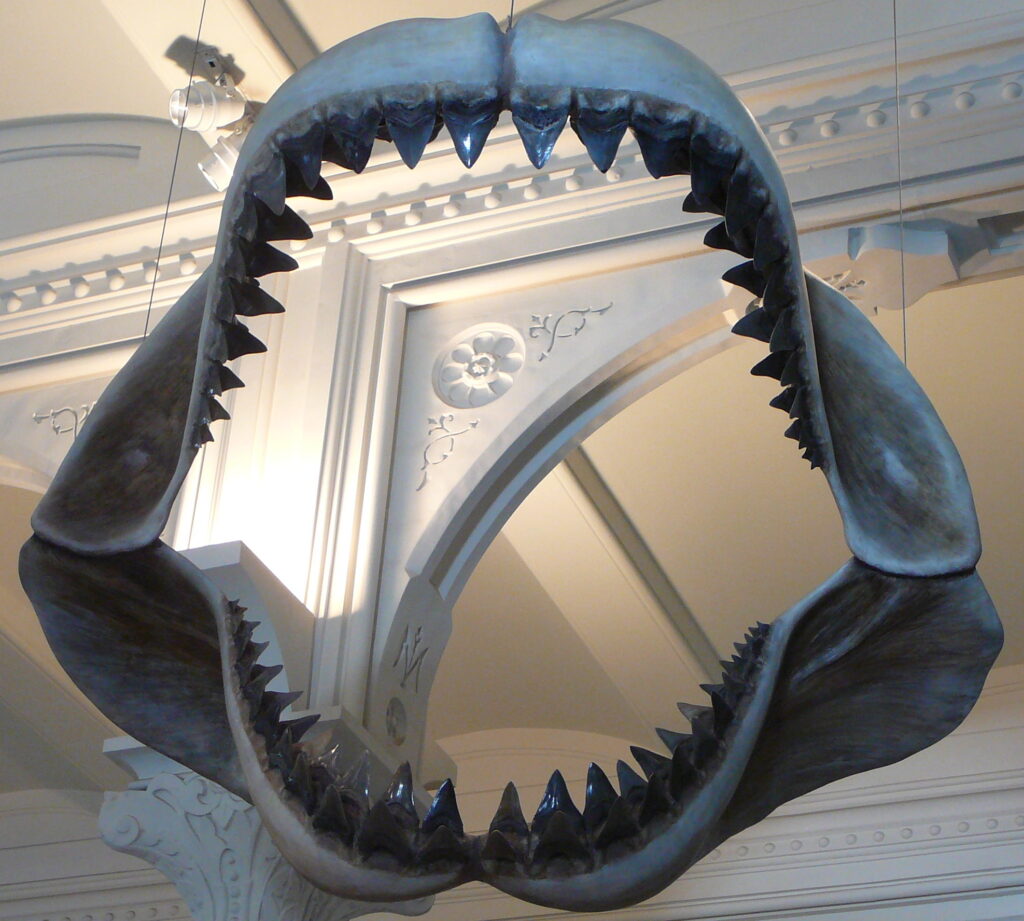The Megalodon, an ancient and awe-inspiring creature, once prowled the oceans as a dominant predator. This extinct species of shark existed around 23 to 2.6 million years ago, leaving behind a legacy that still fascinates scientists and enthusiasts today. One of the most intriguing aspects of the Megalodon is its massive size, with estimates suggesting it could reach a staggering 20 meters in length. While it shares some resemblance to its modern counterpart, the great white shark, a closer look at their teeth reveals fascinating differences and similarities.

To delve into the dental comparison between the Megalodon and the great white shark, we must first acknowledge their shared ancestry. Both these predators belong to the same shark lineage, but their timelines and sizes differ drastically. The Megalodon’s reign predates the great white’s, with the former prowling the waters during the Miocene and Pliocene epochs. In contrast, the great white emerged much later and is a present-day inhabitant of the seas.

The Megalodon’s teeth, which have been discovered in various parts of the world, offer glimpses into the sheer magnitude of this ancient shark. These teeth, some reaching over 7 inches in length, are considerably larger than those of the great white shark. Comparing the two species’ dental structures, it becomes evident that the Megalodon was tailored for a different kind of predation.

The great white shark boasts serrated teeth that are perfectly suited for gripping and tearing apart its prey. These serrations aid in slicing through flesh, making it an efficient carnivore. However, when contrasted with the Megalodon’s teeth, the disparities become apparent. The Megalodon’s teeth, although also serrated, are considerably thicker and more robust. This suggests that its hunting tactics were perhaps more focused on crushing and breaking the bones of its prey, which could have included large marine mammals like whales.

Despite these distinct differences, parallels exist between the two species’ teeth. Both the Megalodon and the great white shark exhibit a remarkable ability to regenerate teeth throughout their lives, ensuring a constant supply of sharp and functional tools for predation.

In essence, comparing the teeth of the Megalodon and the great white shark offers a tantalizing glimpse into the evolutionary adaptations that allowed these predators to thrive in their respective eras. While the great white shark’s teeth are precision-engineered for swift strikes and efficient consumption, the Megalodon’s teeth suggest a more robust approach, potentially adapted for tackling larger prey.

As we continue to uncover the mysteries of the past through paleontological discoveries and comparative analyses, the story of the Megalodon and its role in shaping the ancient marine ecosystem grows ever more intriguing. These teeth, remnants of a prehistoric age, serve as tangible links to an era when a 20-meter behemoth ruled the oceans and forged its own unique path in the tapestry of life’s history




